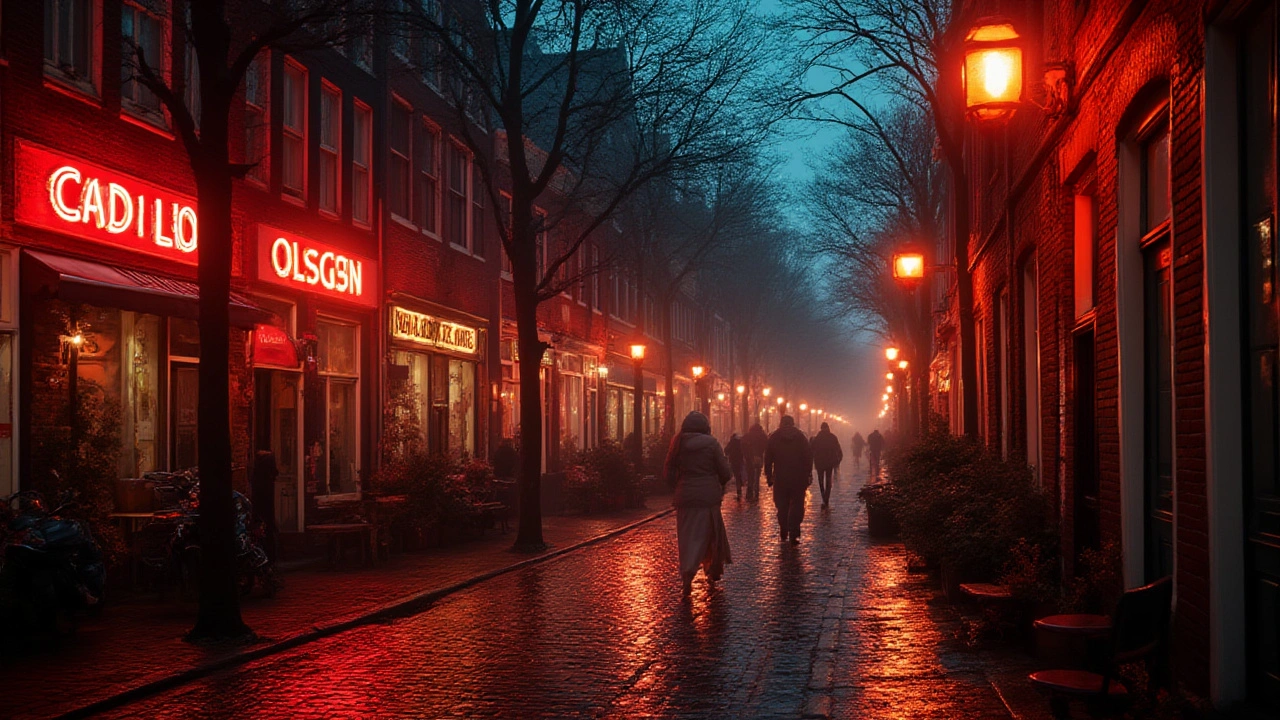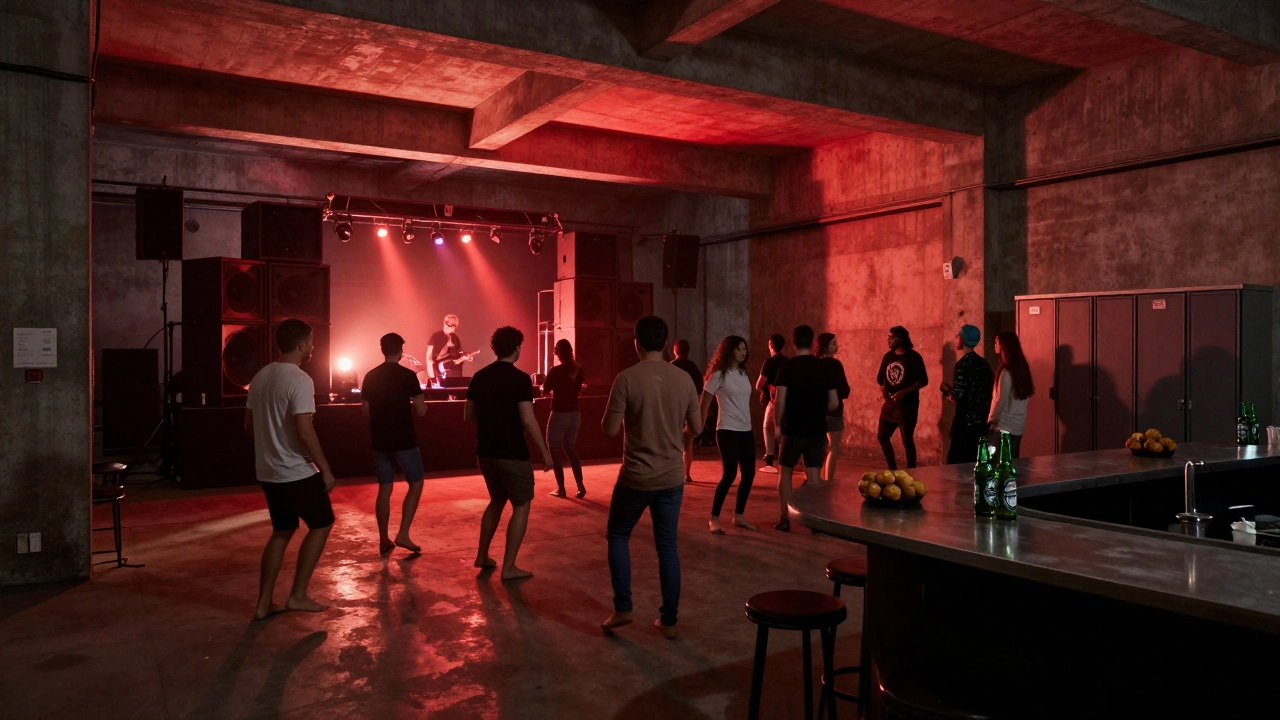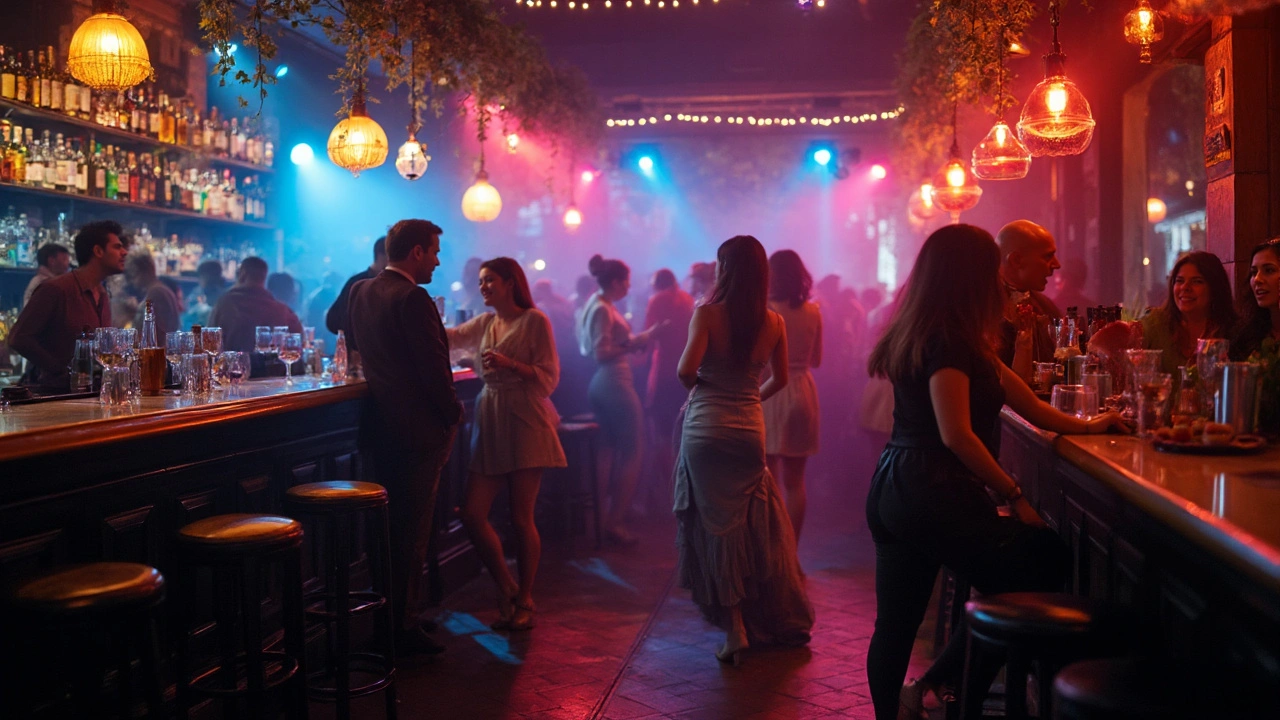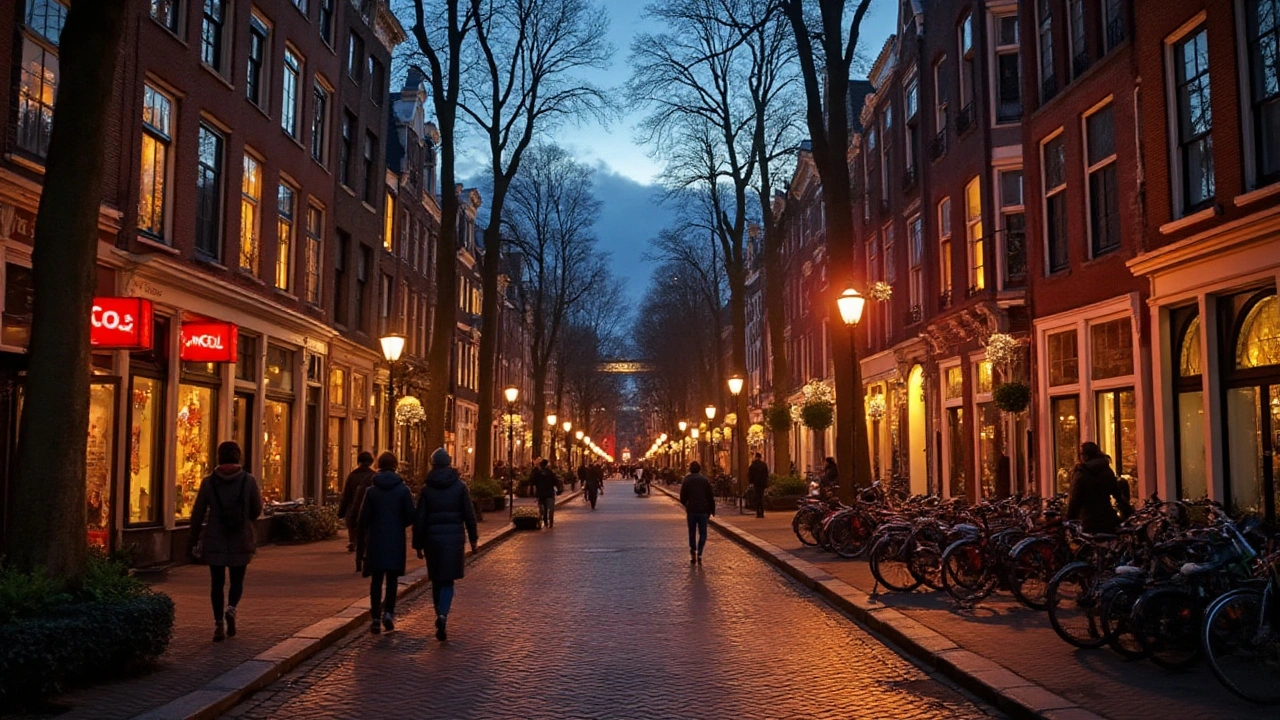
Amidst the winding canals and quaint cobblestones of Amsterdam lies the captivating allure of De Wallen, known famously as the Red Light District. This vibrant neighborhood is where history intertwines with modernity, forming a unique tapestry of both intrigue and acceptance. Within its softly glowing crimson corridors, one finds the enigmatic world of brothels—a space imbued with tales of the past and the electric pulsations of the present.
Stepping into an Amsterdam brothel isn't merely an exploration of the physical realm but a journey into the cultural heartbeat that defines this city's open-minded spirit. Each establishment, framed by the iconic scarlet glass, reveals stories beyond its threshold. The experience is sensory, immersing visitors in a collision of sight, sound, and an unspoken seduction that hums through the atmosphere.
- The Alluring Atmosphere
- Understanding the Culture
- Navigating the Historical Streets
- Cultural Interactions with Locals
- Tips for Visitors
The Alluring Atmosphere
As you meander through the narrow alleys of Amsterdam's Red Light District, a palpable transformation occurs. The ambiance is a sensory tapestry rich with both historical whispers and vibrant energy, casting a spell that is hard to resist. Each brothel, bathed in the rhythmic glow of neon red, becomes an intimate portal into a world where the ancient profession of sex intertwines seamlessly with contemporary culture. The red lights themselves hold symbolic importance, glistening like beacons against the night sky, drawing visitors into a realm they've only heard tales about.
The design of each brothel plays a crucial role in sculpting the guest's experience. From the intricate masonry of century-old buildings to the modern touches of technology that keep the establishment secure, the juxtaposition is striking. Meticulous care in lighting and decor accentuates the seductive allure, crafting an atmosphere where reality intertwines with fantasy. Curiously, the interiors often blend plush fabrics with bold patterns, crafting an environment that is both inviting and mystifying. There's something undeniably magnetic about the artistry, as if each room is styled to tell its own story, beckoning the curious traveler to interpret its tale.
Central to the allure is the soundscape that envelops you. Gentle strains of sultry jazz intermingle with the distant hum of laughter, creating an audio tapestry as rich and inviting as the visual one. It is a grand symphony of emotions, carefully orchestrated to ensnare the senses, encouraging guests to relinquish the mundane and embrace the extraordinary. The atmosphere is perfumed with an intoxicating blend of scent—fragrant candles, perhaps, or delicate incense—an aromatic charm that lingers long after one departs. This sensory harmony defines the Red Light District's unique experiential offering, existing in a space that respects and celebrates its historical roots.
"The atmosphere of Amsterdam's Red Light District is like stepping into another world, one where the age-old dance of desire and discretion is illuminated by modern acceptance," says sociologist Dr. Clara Veen, renowned for her studies on urban subcultures.
Such is the intimate allure of the Red Light District, an enigma that cannot be fully appreciated until personally experienced. The vivid interplay of history and modernity here is accentuated by cultural acceptance, allowing sex work to flourish within a framework of respectability and safety. This blend of openness and privacy transforms each brothel into a sanctuary for exploration, free from the judgment often associated with such endeavors elsewhere. This collaboration between cultural understanding and legalized practice positions Amsterdam as an exemplar in the global dialogue around sex work.
Indeed, the brothels in Amsterdam are not only businesses but are part and parcel of the cultural landscape, providing both service and spectacle. Their sustained popularity is a testament to the city's confident embrace of its identity as a haven for freedom and expression. Tourists, intrigued by the stories, allure, and mystery of the Red Light District, find themselves wandering into a world that captivates and educates. The community's cultural influences are interwoven in the dynamic dance of lights and shadows, ensuring that those who visit leave with a deeper appreciation of Amsterdam's unique tapestry.
Understanding the Culture
Within the cobblestone streets of Amsterdam, an intricate tapestry of culture weaves through the bustling activity of the Red Light District. The district is more than an expression of carnal intent, echoing a centuries-old tradition that speaks to the heart of Dutch liberalism. Amsterdam's unique acceptance of sex work transcends mere legality, deeply rooting itself in the historical and social consciousness of the city. A walk through these streets is an immersion in an environment where symbiosis with freedom redefines once-taboo boundaries.
In the 16th century, these brothels began as places of refuge for seafarers, leading to a cultural evolution that outpaced other European cities. The burgeoning trade routes brought not just goods but also ideas, fostering a social climate that encouraged an open-minded approach to human expression. This cultural acceptance can be seen in the sheer variety of experiences within each establishment. Here, discreet conversations humously punctuate the air, a testament to lives woven with intimacy and discretion.
The district is a living museum of neon-glow and whispered promises. The experiences nestled within lend themselves to an understanding of desire and transaction, opening the mind to conversations rarely had openly elsewhere.
"In Amsterdam, there's a respect for the choices others make, grounded in the desire to understand rather than judge," said Eva de Vries, a cultural historian at the University of Amsterdam.The cultural landscape of this area thrives on the balance between capitalism and personal freedom, a duality that's deliciously palpable with every red-tinted glance.
The arrangement of the district also speaks to a careful orchestration that caters to human nature. In equal parts titillation and titanic revelery, the sights offer a look into an often misrepresented profession. Yet, this is a world guarded closely—layers of aesthetics, emotion, and economics aligning to form a complex web. It is this multi-dimensionality that captivates visitors, encouraging a rethink of prejudices and preconceptions about the sex trade. Interactions here step beyond the transactional, sharing an unspoken intimacy between provider and patron, weaving a rich tapestry detailing the human condition.
In this intricate ecosystem, each brothel serves as both sanctuary and spectacle, where social norms are quietly but powerfully challenged. Setting foot into these spaces is an invitation to perceive a world parallel to our own yet infinitely rich in its vibrancy and unabashed humanity. The act of understanding this culture is akin to slipping into a narrative of whispered desires, historical narratives, and almighty acceptance, each story told as much through actions as words.
| Aspect | Description |
|---|---|
| Cultural Influence | Amsterdam's openness to sex work is deeply historical, dating back to trade routes in the 16th century. |
| Current Acceptance | Brothels in the Red Light District maintain legality and cultural acceptance as part of the city's fabric. |
| Economic Impact | The sex trade contributes significantly to the district's economy, influencing tourism and trade dynamics. |

Navigating the Historical Streets
The historical heart of Amsterdam, where the veins of its past pulse beneath cobbled paths, is centered in the infamous Red Light District. As daylight fades, the streets weave a tapestry of whispers that tell of centuries gone by. Amsterdam's network of canals, initially a strategic trade route, now cradle the effervescent charm that draws travelers from every corner of the globe. This enchanting maze invites all who stroll its alleys to lose themselves, not only in geographical terms but in a broader cultural narrative that the district holds.
Imagine meandering along pathways where sailors, merchants, and travelers of yore trod, accompanied by the hushed echoes of romantic trysts that once transpired in hidden corners. Many structures here, dating back to the 14th century, have borne witness to an evolving world. The architectural marvels themselves—think Dutch Baroque facades and iconic gable roofs—are a poignant reminder of Amsterdam's thriving maritime age. These buildings harbor enchanting secrets and often serve dual purposes, encapsulating modern brothels that paradoxically preserve historical treasures surrounded by the glow of tantalizing red lights.
The infamous Oude Kerk, the city's oldest building, rests at the circuit's heart, where the surrounding streets snake through a kaleidoscope of stories and epochs. Towering with silent grace, it shadows a community bespeckled with curiosity and acceptance. Aren't the chants of history somehow the most beguiling when whispering amongst the others who shared similar spatial sentiments? To nonchalantly traverse the alleys of De Wallen becomes a form of time travel—a set of explorations into the public acceptance of sex work that feels uniquely Amsterdam.
Beneath the flicker of street lamps, the rhythmic clinking of shoes on bricks tells its own tale, interspersed with laughter and murmurs. Lanterns reflect off drawn blinds, revealing fragments of life framed within traditional canopies. This delicate interplay between public and private life offers a scene that's profoundly intimate, yet exhibited for all to see. As the air fills with anticipation, each glance exchanged beneath the neon veil nurtures a rare openness that defines the district's character.
As author Russell Shorto once observed, Amsterdam remains “an island of tolerance in a sea of Calvinism.” The district epitomizes this philosophy, inviting a candid acceptance of human desires as commonplace. To truly experience these historical streets is to embrace the rhythms within, captivating one's senses in a dance of exquisite expectancy.
"Amsterdam's RLD is a blend of antiquity and modernity where every turn echoes stories of acceptance," says historian Lisa Graham.
Cultural Interactions with Locals
In the enchanting labyrinth of Amsterdam’s Red Light District, a unique blend of cultural exchanges showcases the city's hallmark of tolerance and acceptance. Interacting with the locals here is akin to threading through a living tapestry, each strand contributing to the district's vibrant narrative. The people in this part of Amsterdam are not merely bystanders; they are active participants in an ongoing dialogue between tradition and progress. Whether it's a friendly chat with a resident over a coffee in a cozy canal-side café or a casual conversation on the luminous streets, these interactions provide insight into how locals perceive and embrace this global curiosity.
The district is home to a community that has found a harmonious balance between preserving its historical roots and adapting to contemporary sensibilities. Many local residents and business owners have a rich knowledge of De Wallen's heritage, sharing anecdotes that span generations. Usually, these experiences matter more than a simple walk-through of the district, painting a fuller picture of the Red Light District's significance in Amsterdam's history. According to a recent study by the University of Amsterdam, over 70% of residents believe in regulating rather than banning these establishments—a testament to their pragmatic and open-minded ethos.
Embracing the Amsterdam Spirit
The dialogues often extend to topics that explore the underpinnings of Dutch liberalism—a natural curiosity given the city's reputation. Such discussions often reveal the meticulous balance between personal freedom and community welfare that defines Amsterdam's social fabric. Indeed, the Dutch concept of "gedoogbeleid", or tolerance policy, governs much of life in the Red Light District. This framework permits activities that are still frowned upon in many parts of the world, fostering an environment where privacy and public welfare coexist in harmony.
"Walking through the Red Light District, you see Amsterdam's multilayered culture condensed into a single street. It is a space of commerce and carnival, old-world charm, and cutting-edge. Speaking with locals, I understood that it's not about condoning everything but rather finding the middle ground," once noted by Rick Steves, a famous travel guide author.
As dusk settles, casting a surreal glow over the canals, interactions take on an added layer of mystique. Conversations with the local shopkeepers, artisans, and residents unveil a world that thrives beneath the ruby-tinted lights—one that respects the age-old profession while nurturing a vision aligned with modern ethics. Their acceptance may leave an indelible mark, challenging preconceived notions and urging visitors to celebrate the cultural mash-up intertwined with these iconic Amsterdam sights.
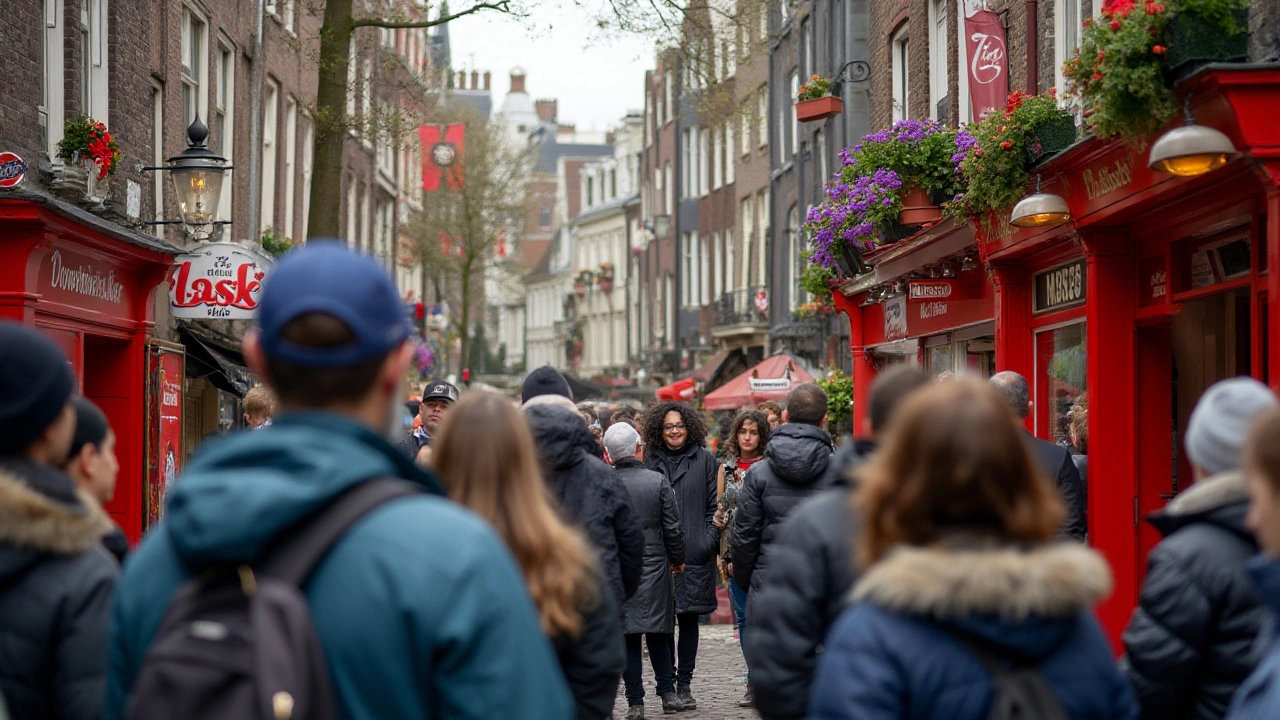
Tips for Visitors
Navigating the entrancing corridors of Amsterdam's Red Light District can be a truly transformative experience, yet it requires a blend of curiosity and respect for the vibrant culture that thrives here. As you prepare to enter this world where societal norms take a back seat to personal freedom, it’s crucial to arm yourself with knowledge that ensures your visit is both respectful and enjoyable.
First, always be mindful of the privacy and autonomy of the workers who grace these windows with their presence. Photography is strictly prohibited, not only as a measure of respect but also as a facet of Amsterdam’s laws protecting individuals' rights. Many a visitor has been caught in the mesmerizing glow, only to be met with stern reminders that personal spaces extend beyond the glittering thresholds of the alluring brothels.
Exploration of the district can often lead to engaging with locals, whose insights provide invaluable layers to your visit. Initiating conversations in a respectful manner can unlock a wealth of stories and cultural exchanges that go beyond the surface level. Speak openly but considerately, treating each interaction as an opportunity to learn. A chat with a local might reveal, "Our neighborhood may be famous for its nightlife, but there’s a tapestry of histories here, woven together by threads of acceptance," a sentiment often echoed in the heart of the community.
"It's important to approach with an open mind and a willingness to understand that what you see is a partnership of heritage and modern acceptance," said Ian McEwan, a renowned cultural historian.
When it comes to financial transactions, be prepared and respectful. Cash is typically the preferred method of payment within the brothels, owing to its discreet nature. Tourists are encouraged to carry sufficient currency, ensuring smooth and respectful interactions without any unnecessary complications. A common tip is to pre-negotiate services to avoid misunderstandings.
As you weave through the district's streets, it's easy to become entranced by the web of lights and sounds that make this part of Amsterdam so unique. Consider timing your visit strategically; weekdays are less crowded, offering a more intimate atmosphere compared to the bustling weekend nights. Early evenings provide a moderate flow of tourists, allowing for a leisurely exploration without the hustle and bustle of the late-night crowd.
Lining Up for a Unique Experience
Seek out brothels that offer guided tours or historical insights. These aren't merely seductive retreats but can serve as windows into the complex history and socio-economic tapestry unique to Amsterdam. Such experiences allow you to engage more deeply with the heritage cloaked beneath the district's more conspicuous features. Some brothels offer educational sessions, peeling back the layers of false mystique to reveal an industry intertwined with respect, rights, and commerce.
- Engage in authentic experiences like canal-side cafes, which offer a panoramic view of the district's rhythm while sipping on Dutch koffie.
- Consider exploring adjacent attractions such as the Oude Kerk, a historical church anchoring the neighborhood with its stoic presence.
- Remember that cultural exploration extends beyond the Red Light District; nearby museums such as the Amsterdam Museum give context to the city's storied development.

